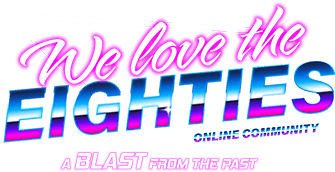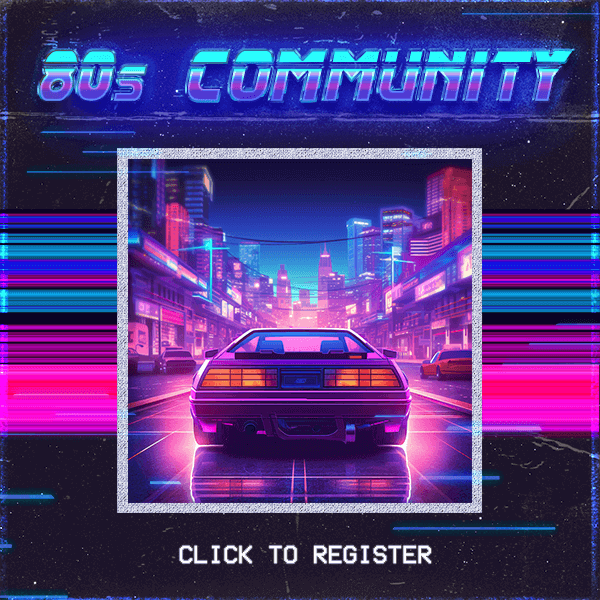Celebrating the Undying Spirit of 80s Hair Bands

In the pantheon of rock music, the 1980s stand out as an era of excess, extravagance, and electric energy, largely thanks to the rise of hair bands.
With their towering hairstyles, flamboyant fashion, and larger-than-life personas, these bands became the defining face of a significant part of rock music during this decadent decade. The 80s were a time when rock wasn't just about the music; it was a full-blown spectacle, a sensory overload of sound, style, and sheer exuberance.
Hair bands combined the hard-hitting elements of rock and heavy metal with the catchy hooks of pop, creating a genre that was as accessible as it was rebellious. Their music, characterized by powerful guitar riffs, anthemic choruses, and unforgettable solos, became the soundtrack to a generation seeking escapism and excitement.
But it was more than the music – these bands' theatrical performances, complete with pyrotechnics and outrageous stage antics, made their concerts events that transcended typical gigs.
The influence of 80s hair bands went beyond just their music and performances. They set trends in fashion and lifestyle, embodying a spirit of non-conformity and self-expression that resonated with fans worldwide. Their legacy, enduring well into the modern era, is a testament to the timelessness of their appeal and the universal language of rock music.
Defining the Hair Band Phenomenon
At the very heart of the hair band aesthetic was, of course, the hair: teased, sprayed, and often defying gravity. These voluminous hairstyles became iconic, symbolizing the rebellious and carefree spirit of the era.
But the flamboyance didn't stop at the hair. The fashion choices were equally bold and outlandish. Inspired by glam rock of the 70s, these bands adopted a look that was a cocktail of leather, spandex, bandanas, and makeup.
A Melodic Fusion of Genres
Musically, hair bands struck a delicate balance between the aggressive power of hard rock and heavy metal and the catchy appeal of pop music. Powerful guitar riffs and solos, thunderous drumming, and strong bass lines characterized their sound.
However, what set them apart was their incorporation of melodious hooks and choruses, making their music not just head-banging anthems but sing-along hits as well. The lyrics often revolved around themes of love, partying, and the rock and roll lifestyle, resonating with the youth's desire for escapism.
The Theatrics
The theatricality of hair bands was as integral to their identity as their music. Their live performances were electrifying spectacles, complete with pyrotechnics, elaborate stage sets, and energetic personas.
These bands didn't just play music; they put on a show, engaging the audience in a multisensory experience.
This blend of distinctive style, a fusion of musical genres, and theatrical performances defined the hair band phenomenon of the 80s. It was an era where the visual was as important as the auditory, and the image of the band was as crucial as the music they produced. This unique combination cemented hair bands as an unforgettable chapter in the history of rock music.
Iconic Hair Bands of the 80s
The 80s hair band scene was populated with a multitude of bands, each bringing their own flavor to the genre. Here are ten of the most iconic hair bands of the 80s, whose music and style left an indelible mark on rock history.
Mötley Crüe: Known for their wild lifestyle and heavy sound, Mötley Crüe epitomized the excess of the 80s. Hits like “Kickstart My Heart” and “Girls, Girls, Girls” are quintessential hair band anthems.
Bon Jovi: Blending hard rock with pop, Bon Jovi created some of the era's most memorable songs, including “Livin' on a Prayer” and “You Give Love a Bad Name.” Their appeal transcended the typical boundaries of rock music.
Poison: With their catchy hooks and glam-infused style, Poison was a staple of the hair band scene. Songs like “Every Rose Has Its Thorn” and “Nothin’ But a Good Time” are enduring classics.
Def Leppard: Def Leppard brought a polished sound to the genre, with massive hits like “Pour Some Sugar on Me” and “Love Bites,” combining hard rock with melodic elements.
Guns N’ Roses: A band that blended raw energy with complex compositions, Guns N’ Roses became legends with songs like “Sweet Child o' Mine” and “Welcome to the Jungle.”
Twisted Sister: Known for their rebellious anthem “We're Not Gonna Take It,” Twisted Sister combined shock rock elements with a hard-hitting sound.
Whitesnake: Whitesnake captured the essence of 80s rock with hits like “Here I Go Again” and “Is This Love,” showcasing a blend of bluesy hard rock and power ballads.
Ratt: With a sleazy rock sound and hits like “Round and Round,” Ratt was a significant player in the LA rock scene, known for their energetic music and charismatic stage presence.
Warrant: Warrant gained fame with their catchy tunes like “Cherry Pie” and “Heaven,” embodying the fun and party vibe of the hair band era.
Skid Row: Known for their raw sound and Sebastian Bach’s powerful vocals, Skid Row’s hits like “18 and Life” and “I Remember You” showcased a grittier side of the hair band genre.
The Fall and Resurgence of Hair Bands
The shift in the musical landscape during the early 1990s marked a significant turning point for 80s hair bands, leading to a decline in their mainstream popularity.
The Rise of Grunge and Alternative Rock
The early 90s saw the emergence of grunge and alternative rock, which contrasted sharply with the glitz and glamour of hair bands.
Bands like Nirvana, Pearl Jam, and Soundgarden brought a raw, more introspective style of music to the forefront. This new wave of rock was seen as a return to the genre's roots, focusing on authenticity and introspection over theatrics and excess. The grunge movement resonated with a new generation of music fans, shifting the public's musical taste and the music industry's focus.
A Cultural Shift
This era also marked a cultural shift. The carefree and hedonistic ethos of the 80s gave way to a more somber and reflective mood in the 90s.
The flamboyant style and over-the-top performance of hair bands fell out of favor as audiences gravitated towards grunge's more grounded and gritty aesthetic. Over time, hair metal was replaced by a more subtle and nuanced approach to music, one that continued the ideals of classic rock and fused them with a new flavor.
Resurgence and Nostalgia
However, the story of hair bands did not end there. In recent years, there has been a significant resurgence of interest in 80s hair bands. Nostalgia for the era and a general revival of interest in retro culture have brought these bands back into the limelight.
Many hair bands have experienced a revival, with reunions, new music releases, and tours attracting old fans and a new generation of listeners discovering the genre for the first time. The music and style of hair bands are celebrated in popular media, from movies and television shows to music festivals dedicated to the 80s rock scene.
We Love 80s Music!
Few songs can come on the radio and not leave us singing along. We know it when we hear it, and hair band music is instantly recognizable. There's something special about this classic rock style that instantly appeals to people of all ages.
Whether you lived through the 80s or are a fan of the music today, let’s keep the conversation going on these legacy bands and the 80s music revival. Share your favorite memories and stories of your top 80s hair metal bands with us in the forum!



